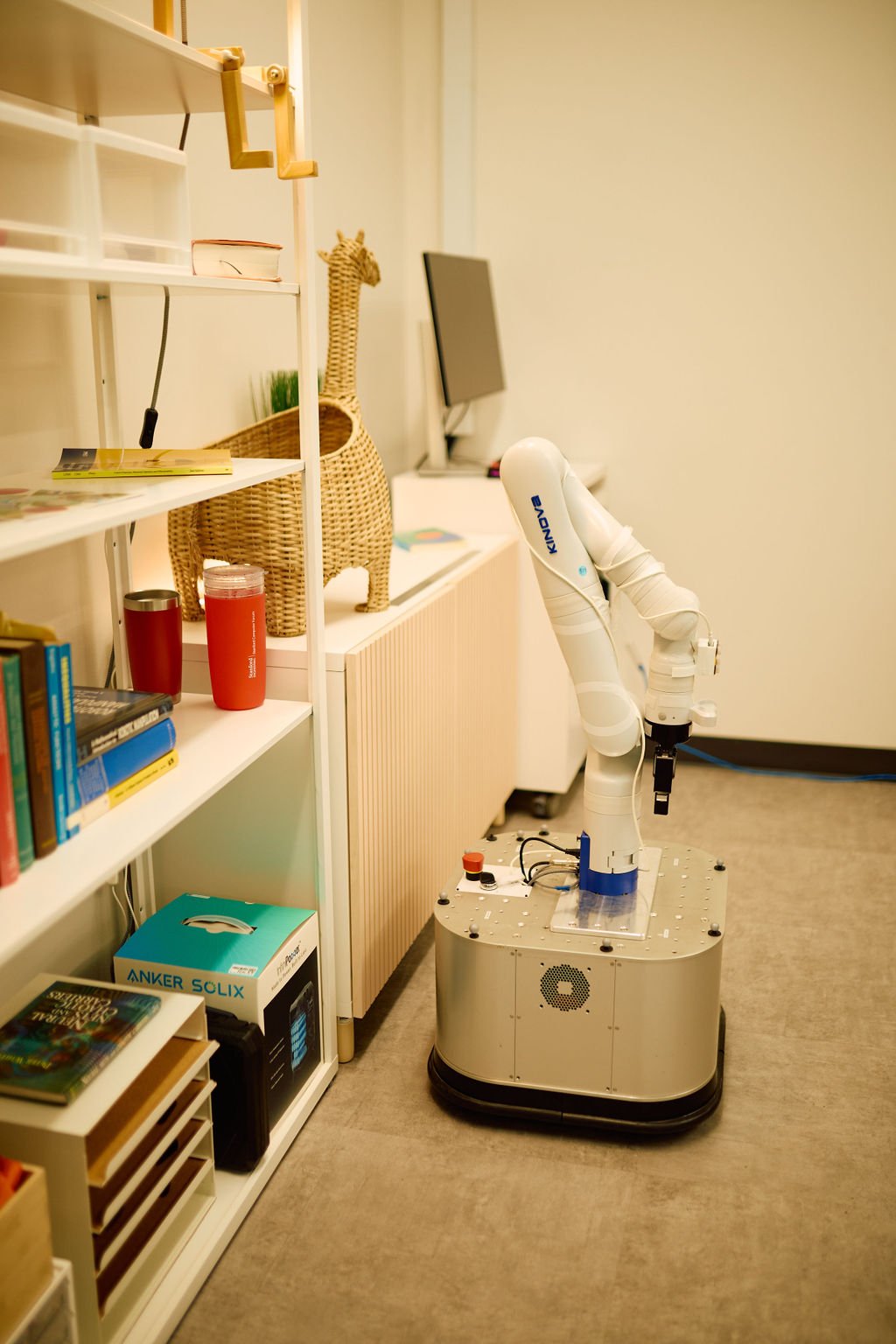Domestic Suite
Enhancing everyday life through practical and adaptable domestic robotics.
The Domestic Suite mimics the size and amenities of a real life studio apartment for robotics research
The Domestic Suite at the Stanford Robotics Center focuses on developing robotic systems to assist with companionship, human augmentation, household chores, and smart home environments. These systems aim to provide support for daily tasks, improve home convenience and safety, and assist individuals with special needs. The goal is to create practical, user-friendly solutions that can adapt to diverse living spaces and individual preferences.
An initial research project in the Domestic Suite includes TidyBot, a mobile manipulator designed to assist with household cleanup by picking up objects and putting them away based on user preferences. TidyBot leverages language-based planning and perception combined with large language models to learn user preferences from a small number of examples. This enables the robot to generalize its understanding and personalize assistance, achieving high accuracy in placing objects correctly even in unfamiliar scenarios.
In addition to household tidying, Domestic Robotics research explores assistive technologies such as a robotic arm that utilizes AI to provide feeding assistance. This system is designed to support individuals with mobility limitations, helping them maintain independence by accurately delivering food in a way that aligns with their preferences and needs. The development of such systems focuses on improving interaction capabilities, adaptability, and ease of use to better integrate into daily life.
The term “Activities of Daily Living” (ADI) encompass essential tasks such as feeding, dressing, grooming, and other personal care activities that are critical for maintaining independence, especially among seniors. As these routine activities can become increasingly challenging with age, robotics in this field holds significant promise. By providing personalized, reliable assistance with ADI, systems like TidyBot and assistive feeding arms not only help reduce physical strain and risk of injury but also promote a safer, more organized living environment. Ultimately, these technologies can empower seniors to live more independently and improve their overall quality of life.
The Kitchen
The Domestic Robotics suite at the Stanford Robotics Center includes a fully functioning kitchen designed to support research in household assistance. This space provides a realistic environment for testing robotic systems in common kitchen tasks such as cooking assistance, organizing kitchen items, and performing cleaning duties.
The Kitchen has all the features and utilities of a real life kitchen, with a sink, refrigerator, stove, dishwasher and microwave.
Explore a 3D reconstruction of the Domestic Suite
Projects in the Domestic Suite
TidyBot
TidyBot is a mobile manipulator designed for household cleanup that learns and adapts to user preferences from just a few examples. By integrating language-based planning with advanced perception, TidyBot efficiently organizes clutter, making home maintenance smarter and more personalized.
Learn More About the TidyBotAssistive Feeding
The assistive feeding project is an AI-driven robotic system designed to help individuals with mobility limitations by delivering food accurately and according to their personal preferences. It enhances dining independence and safety by seamlessly integrating advanced interaction capabilities into daily meal routines.
Learn More About the Assistive Feeding Project


